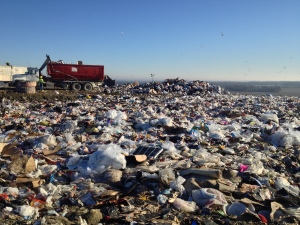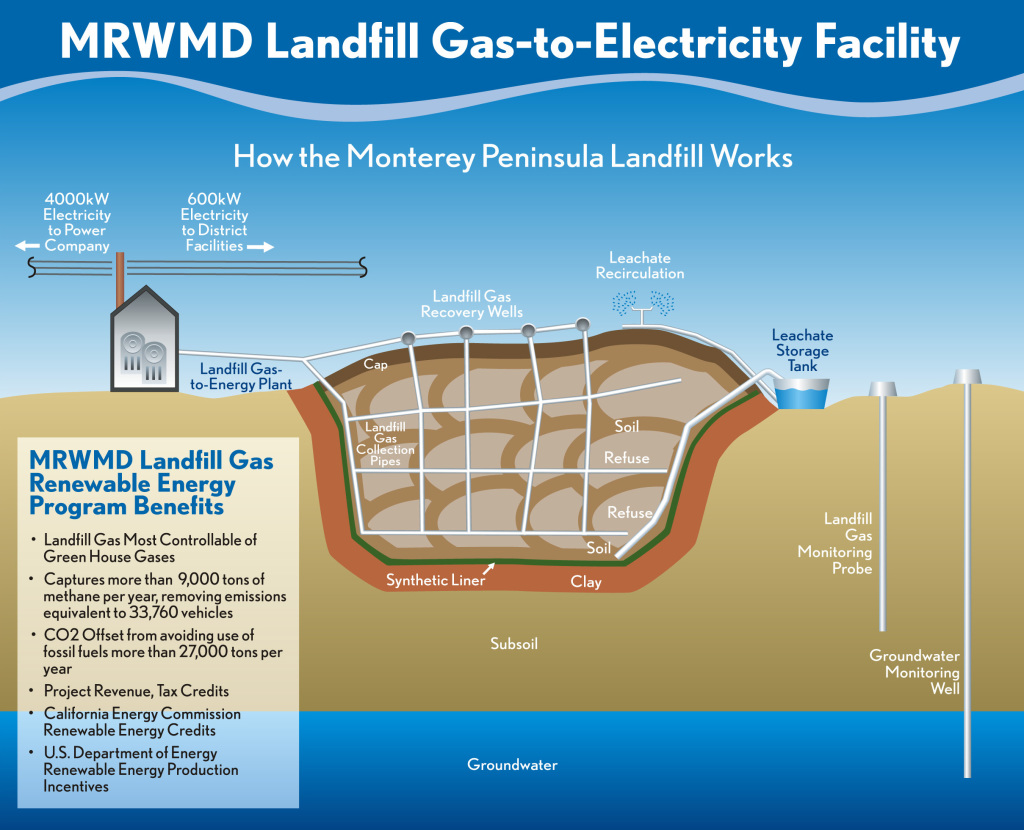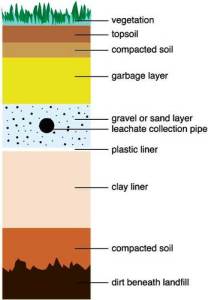You may think that a landfill or dump site is just a giant hole in the ground, but EPA and OSHA have a much greater say processing your trash.
When I was a kid, my family lived near Ann Arbor, MI next to a landfill. I remember watching the giant trash trucks drive in. There were seagulls and pigeons flying around all the time. I even remember during the summer you could smell it. It really did stink. We moved away when I was in the second grade. When I was older and went for a walk down memory lane the landfill was gone and in its place was this:
The landfill had become a park. I though, “that is so cool,” I didn’t know this was a common practice. There are many factors to consider when city planners get together and “build” a landfill.
Here is a diagram of a landfill for the community of Monterey, CA that includes reuse of menthane gas providing energy.
Kind of cool. We have discovered a way to turn our trash into energy, bioenergy.
Prepared Subgrade: This is the raw soil the creates the outline of the landfill.
Compacted Clay: Clay is added and compacted to form a natural barrier filter in between the liner and earth.
Geomembrane: This is a high-density plastic liner that is impermeable and extremely resistant to decomposing chemicals and compounds, also called Leachates.
Pipe System: Pipes are installed to exhaust methane gases (Leachates) that will be produced during decomposition. This exhaust is funneled through a management facility to create significantly less air pollution. Sometimes the facility energy plant renewing the exhaust into usable energy.
Geotextile Filter: This material is sometimes used over the pipe intake to reduce the debris entering the pipe systems.
Leachate Collection Layer: A layer of sand, gravel or hard plastic mesh that allows the Leachates to seep to the pipe system by way of gravity.
Waste Layer: The trash that is dumped into the land fill.
Daily Cover: The waste layer is covered daily with soil or other approved materials to reduce odors, keep litter from blowing around and also to help scavengers and pests.
When the landfill reaches its planned capacity these layers are added.
Compacted Clay: This layer of compacted clay prevents excess water and moisture from entering the landfill. The addition of water forms more gas which would cause unneeded air pollution and offensive odor.
Geomembrane: The top geomembrane with the clay promotes a better top seal on the landfill.
Drainage Layer: Gravel to help filter in between the cover soil and geomembrane.
Protective Cover Soil: Protects the landfill cap system and provides additional moisture retention to help support the cover vegetation.
Top Soil: Helps to support and maintain the growth of vegetation by retaining moisture and providing nutrients.
Cover Vegetation: As portions of the landfill are completed, native grasses and shrubs are planted and the areas are maintained as open spaces. The vegetation is visually pleasing and prevents erosion of the underlying soils.
So there you have it. What you thought was a useless hole in the ground not. It is a well engineered, necessary part of our existence that is being put to the best use possible.




